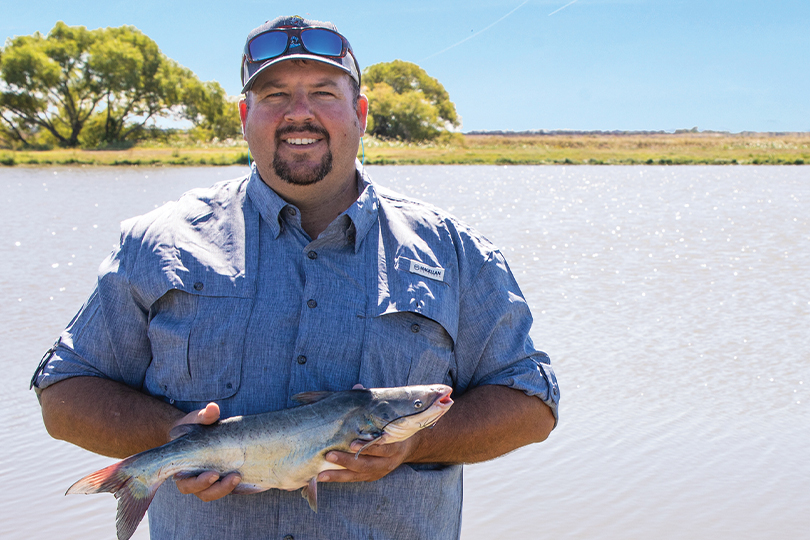By Julie Tomascik
Editor
Darrell Bowers wanted to come back to the family farm after college, but he wanted to do things differently.
He didn’t want to just grow traditional row crops.
So, he and his family decided to dive into raising catfish in 2003. They put three ponds on 40 acres.
And they’ve made a splash in the aquaculture business since then.
“With corn and milo, you’re feeding your food’s food. You’re using it to feed cattle or feed chickens, or something like that, for the most part,” Bowers said. “With the catfish, it’s direct to consumer. What we’re growing here can end up on somebody’s plate in 36 hours.”
Their farm, 5B Farms, is a family partnership with Bowers, his brother, his sister and his parents. They still grow cotton, corn and sorghum, as well as raise cattle, in Victoria County. But the biggest part of the farm is the catfish.
They’ve grown their three catfish ponds to nearly 90 ponds today, and they’re one of the largest catfish farms in the state.
But it hasn’t been without challenges.
“Hurricane Harvey came in, so we had to rebuild,” Bowers said. “When we rebuilt, we decided a smaller, deeper pond was a better option. We’ve taken those eight acres and we’ve cut them in half to four-acre ponds.”
The four-acre ponds are seven to eight-feet deep. And with deeper water, the temperatures don’t change as much.
“What we’ve done is deepen the water, and the fish can find a zone down there where the temperature’s more stable. That’ll limit the amount of stress they have during the changing seasons of fall and spring,” Bowers said. “I think that helps the fish overall.”
They mainly grow a blue channel hybrid, which is a blue catfish crossed with a channel catfish.
“The goal was to produce a crop every 12 months. Some of those fish that we stock in January and up to May will start being ready around October, November. Then, we’ll harvest throughout the winter,” he said.
They average about 15,000-17,000 pounds to the acre.
To harvest the fish, they use a seine net.
“It’s on a giant reel. Imagine a fishing reel that is eight-feet wide and eight-feet tall, and instead of string on it, it has a net that’s 12-feet tall,” he said.
They start on one end and use tractors to pull it across the pond.
“Then about 150 feet from one end, we have what we call a live car or a live sock. We herd or funnel those fish into that live sock,” he said.
Then, they use a gradall excavator with a stringer on the end of it to dip out about 2,000 pounds at a time.
“Fish have to go on the trucks alive. They use oxygen, cool water. We put them to sleep,” Bowers said. “They stay fresh, but really cold, and get to the plant really fresh.”
The catfish on 5B Farms can end up all over the country in supermarkets and restaurants, but most of their fish are being marketed in Texas as Texas-grown catfish.
And that’s something Bowers and his family are proud of.

